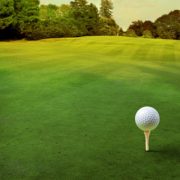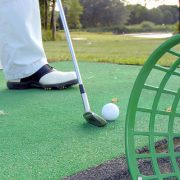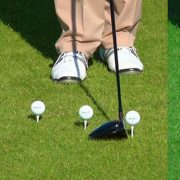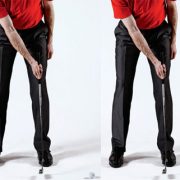How to hit a Great tee shot
Every golfer wants more distance off the tee. Trust me – I’d give almost anything to be able to launch a 300 yard bomb down the middle on command!
But, the BEST players in the world know that focusing on distance ISN’T the right way to hit a great tee shot…
The drives that really get your game going are more than just power. They are the product of proper planning, careful consideration, and the ability to see BEYOND the tee box to the approach shot you’re setting yourself up for.
Here’s my top tips for hitting GREAT tee shots…
Think twice before pulling your driver. For most golfers it’s almost an automatic reflex – when you walk onto the tee box of a par 4 or par 5 you grab the driver out of your bag without even thinking. To hit a great tee shot, you’ve got to be smarter than that.
Imagine your ideal approach. Where would you like to play your approach shot from if you could drop a ball anywhere in the fairway? For me it’s always right at 125 yards – a perfect full swing with my trusty pitching wedge.
Do the math. If you’re playing a 330 yard hole and your ideal approach shot distance is 125 yards, a GREAT tee shot only needs to be 205 yards down the fairway. For me this means keeping the driver in the bag and pulling out my trusty 5 wood.
Focusing on these simple tips will help you hit better tee shots, lower your scores, and have more fun out on the golf course. Here’s to starting every hole off right!








